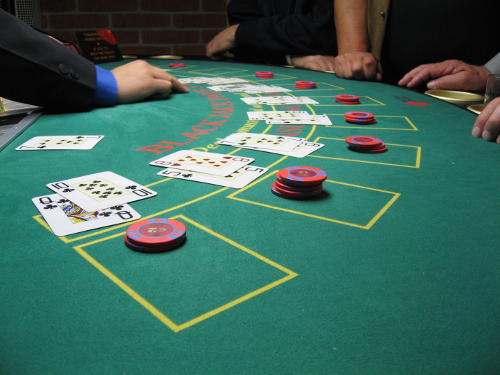Contents
Card Counting Is Easier Than People Think
It isn’t memorizing all the cards that come out of an 8 deck shoe. Instead, it is just knowing the difference between the number of small cards and the number of big cards.
People unfamiliar with card counting tend to think that it requires great memorization and this simply isn’t true. The misconception is that one must keep track of every single card to be successful.
The reality is that the player simply groups cards with a point system as follows:
2, 3, 4, 5, 6: +1
7, 8, 9: 0
T, J, Q, K, A: -1
Here is a graphical version of the groupings:
Groupings for Counting Cards

Getting rid of low cards is a good thing so we score positive points when that happens.
Mid cards are neutral so we don’t have to keep track of them.
Getting rid of broadway cards is bad, we need those big cards for blackjack! Our count loses points/value when these great cards get used up.
We only need to know the difference between the number of small cards that have been used up and the number of big cards. It’s as simple as that.
Hand Example
It’s the first hand of the shoe. I stand on T4 since the dealer is showing a 6. He then shows a 2 as his other card. He hits and gets a Jack (J).
What is the count at the end of this hand?
If you answered +1 then you’re right. Here are the details:
T: -1
4: +1
6: +1
2: +1
J: -1
—–
total: +1
This is the running count but what really matters is the true count. We’ll get to the true count later.
Another Hand Example
As we saw above, the first hand of the shoe gave us a running count of +1. We’re now on the second hand and it goes like this:
Me: AQ
Dealer: 5K7
Here are the count details for this second hand:
A: -1
Q: -1
5: +1
K: -1
7: 0
—-
total: -2
What is the running count now? It was +1 at the start of this second hand. The second hand deducted 2 points from the running count so now the running count is -1.
Running Count
The running count is the sum of the individual counts of all hands in the shoe.
If the individual count of the first hand in the shoe is +1 then the running count is +1. If the second hand in this shoe has an individual count of -2 then the running count becomes -1. If the third hand in this shoe has an individual count of +3 then the running count becomes +2.
True Count
The true count is the running count divided by the number of decks left in the shoe. For example, if there are 2 decks left in the shoe and the running count is +4 then the true count is +2. On the negative side, if the running count is -6 and there are 2 decks left then the true count is -3.
Betting Strategy
If the true count is near 0 or below 0 then players bet the minimum. Players bet more as the true count gets high above 0. We use a betting system where the betting unit is the same as the table minimum. Starting with +1, every one point increase in the true count adds another betting unit.
Here is our betting strategy on a $10 minimum table:
Count 0 or Less: bet $10
Count +1: bet $20
Count +2: bet $30
…
Count +x: bet 10*(x+1)
Our blackjack betting strategy section has more details on the thinking behind our betting strategy.
Card Counting Systems: Hi Lo vs Hi Opt
Everything we’ve explained here is for the Hi Lo card counting system. The Hi Opt card counting system is almost the same thing except that in Hi Opt the deuces and aces are not counted. In other words, in Hi Opt both A and 2 are 0 instead of -1 and +1 respectively.
Online Practice
Of course the best way to practice card counting online is to use our trainer tool. Beginners have the option of trying a few hands to make sure they get the right count on each hand individually. Intermediate counters can go through the shoe and see if they are able to keep the correct running count. Advanced players can make sure they are sizing their bets correctly based on the true count.
Offline Practice
Find a deck of cards and deal out all but one while keeping track of the running count. At this point the count is either -1, 0, or +1. Based on this information, you know if the last cards is small, medium, or large. After the last card is dealt then the count is back to zero if you counted all the cards correctly.
Save The Big Bets For Times When Odds Are Good
This isn’t rocket science. Instead of randomly changing the size of bets, players should increase bet sizes when the true count says odds are good.

Leave Your Feedback Below!
Submit your review | |


 Play Live Blackjack at Bovada Casino!
Play Live Blackjack at Bovada Casino!